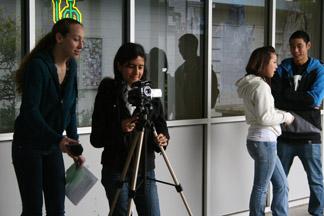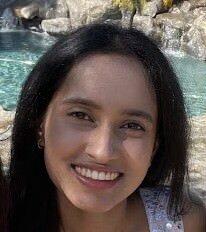First introduced to last year’s sophomore class, the Media Arts Program, or MAP, has grown to include three engaging new electives for second-year Media Arts students: advanced animation and two video production classes: filmmaking and multimedia journalism.
In the second year of this program, students are able to choose one or more of these classes that are more specific to their area of interest and receive a more advanced level of training. The 52 juniors in this level of the MAP program share three common classes: English, history and their chosen media elective. The three media electives also include non-MAP students who meet the prerequisites for their respective class, but they do not always do the same work as the MAP kids.
With a focus on learning more advanced skills, the advanced animation class is ideal for those who enjoy drawing and art, want to build their portfolios and gain proficiency in using animation and advanced technology. To ensure that students are learning what they need to know in order to be successful, funding has even been provided for staff consultant and animation and design professional Cathy Leather, who has 30 years of experience in the field and is helping to develop the curriculum by providing MAP teachers with information on what skills industry requires today.
“Classes are doing really well for first year classes,” said animation teacher Tony Palma. “I can’t wait until next year because we are learning from our mistakes.”
A student in advanced animation, junior Alex Chan, agrees that there has been progress.
“There’s a lot of improvement,” said Chan. “Animation is definitely the most organized MAP class.”
Although Chan says that they are not learning real animation yet, they are building a strong foundation by honing their drawing skills with the flash program, plotting final products and drawing frames of each scene using 6×8 digital drawing pads. The more successful students are ones with an art background because animation focuses on art.
“Classes started out well,” said Palma. “There has been good work from students, but there’s always room for improvement.”
Indeed, there are obstacles that the class faces, like the difference in students’ skill levels, and hence needed differences in instruction.
“It’s hard to challenge more advanced students and teach newer technology students at the same time,” said Palma.
On the other hand, the filmmaking class gives students the opportunity to form production teams, come up with concepts, write, cast and edit in the lab in room 201, which has new iMacs with software that include Photoshop and the advanced editing program Final Cut Express. Students work on movies while focusing on film techniques, styles, and production, with an emphasis on the importance of planning and coordinating with others.
“Filmmaking gives experience. It shows the students’ leadership, creativity, and collaboration skills,” said filmmaking teacher Chris Mahle, who hopes that the MAP program can expand to accommodate every student’s schedule.
Senior Lauren Henderson, who is not a part of the MAP program but wanted to take a fun elective, finds that she is able to not just edit, but also take part in screenwriting, developing stories, directing and reaching out to others for interviews.
“It’s a really fun class. It’s a lot of work––more work than I expected––but it’s fun work,” said Henderson.
Because the filmmaking class is a branch of the MAP program, the class is affected heavily by deadlines of the many MAP projects, which are only assigned to MAP students. As a result, students often are overloaded with projects and do not have as much time as they would like to edit their work.
“You’ll finish a movie and you’ll be like, ‘Wow, that could be so much better if we had more time,'” said Henderson.
To resolve this issue, MAP teachers are planning on scaling back its requirements so that students will have fewer projects and more time to work on each one.
The MAP teachers are not planning to add any new electives at the senior level but are exploring options in incorporating media arts to already existing classes, such as government. Students next year can also choose to take a MAP elective that they have not yet taken, and those in multimedia journalism can also continue with that elective.
All media arts electives, however, will be taking place next year in the new $2.5 million multimedia center, a building constructed solely for the purposes of media arts and using technology to record and broadcast student talents and abilities. This means that any student, not just MAP students, will be able to sign up and use this center with the help of MAP students who are trained to use the expensive equipment. Teachers, too, are encouraged to take advantage of this valuable resource by recording lectures or demonstrations.
With the future so full of new opportunities, teachers and students alike are eager to continue the program’s early success.
“I am very excited,” said Palma. “It’s a lot of work to start a new class, and the students have been very patient. And it’s only going to get better.”



























